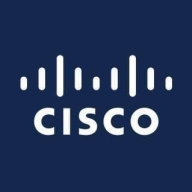

Cisco Sourcefire SNORT and Fortinet FortiGate are prominent in the network security market. Fortinet FortiGate appears to have the upper hand due to its expansive feature set and integration capabilities, making it a more comprehensive solution despite a higher price point.
Features: Cisco Sourcefire SNORT offers flexibility and customization with its open-source nature, making it suitable for detailed intrusion detection. It includes intelligent security automation, SSLI feasibility, and strong threat detection capabilities. Fortinet FortiGate stands out with its integrated security features like advanced threat protection, application control, and a robust firewall. It also provides SD-WAN functionality, application filtering, and comprehensive UTM features, making it an all-in-one solution attractive for various organizations.
Room for Improvement: Cisco Sourcefire SNORT could enhance ease of use by reducing its learning curve and offering more intuitive interfaces. Additionally, improving default configurations for beginners and streamlining its widespread functionality can advance its accessibility. Fortinet FortiGate might increase affordability by revisiting its pricing strategy, particularly for smaller organizations. Enhancing reporting and analytics, as well as refining its interface for even better user-friendliness, could enhance its usability.
Ease of Deployment and Customer Service: Cisco Sourcefire SNORT requires more technical expertise, presenting a challenge in deployment, but it benefits users with robust threat detection capabilities once configured. Fortinet FortiGate offers a range of deployment options, from small businesses to large enterprises, complemented by strong customer support, making it more accessible to organizations with varied needs.
Pricing and ROI: Cisco Sourcefire SNORT's open-source model translates into lower initial costs, providing value through cost-effectiveness. Fortinet FortiGate, although higher in setup costs, offers significant ROI by delivering extensive security features and consolidated management capabilities. The investment in FortiGate can be justified by the enhanced protection and integrated solutions it delivers, exemplifying a longer-term value despite its initial expense.
| Product | Market Share (%) |
|---|---|
| Fortinet FortiGate | 16.6% |
| Cisco Sourcefire SNORT | 2.7% |
| Other | 80.7% |


| Company Size | Count |
|---|---|
| Small Business | 5 |
| Midsize Enterprise | 8 |
| Large Enterprise | 7 |
| Company Size | Count |
|---|---|
| Small Business | 350 |
| Midsize Enterprise | 130 |
| Large Enterprise | 187 |
Snort is an open-source, rule-based, intrusion detection and prevention system. It combines the benefits of signature-, protocol-, and anomaly-based inspection methods to deliver flexible protection from malware attacks. Snort gained notoriety for being able to accurately detect threats at high speeds.
Fortinet FortiGate excels in providing integrated VPN, firewalling, and Unified Threat Management (UTM) with centralized management and high availability. It supports remote access and comprehensive threat protection, making it a preferred choice for securing networks.
Fortinet FortiGate offers a robust security platform with features such as strong intrusion prevention, application control, and web filtering. Its integration with Active Directory and SD-WAN functionality provides scalable solutions for large networks. Users appreciate its ease of use through centralized management interfaces, ensuring robust security with flexible configurations. However, FortiGate could enhance its graphical interface and technical support responsiveness, address firmware bugs and costly licensing, improve logging, integrate better with third-party tools, and strengthen scalability and memory for log storage. Complexity in configuration and the need for intuitive features are noted challenges, and there's a demand for advanced security, zero-trust capabilities, and AI integration.
What are the key features of Fortinet FortiGate?Fortinet FortiGate is widely implemented across industries like education, finance, and government. Companies use it for firewall protection, VPN, and SD-WAN capabilities, ensuring secure perimeter and data center security. It facilitates remote access management and traffic routing optimization, offering reliable security and connectivity solutions.
We monitor all Intrusion Detection and Prevention Software (IDPS) reviews to prevent fraudulent reviews and keep review quality high. We do not post reviews by company employees or direct competitors. We validate each review for authenticity via cross-reference with LinkedIn, and personal follow-up with the reviewer when necessary.